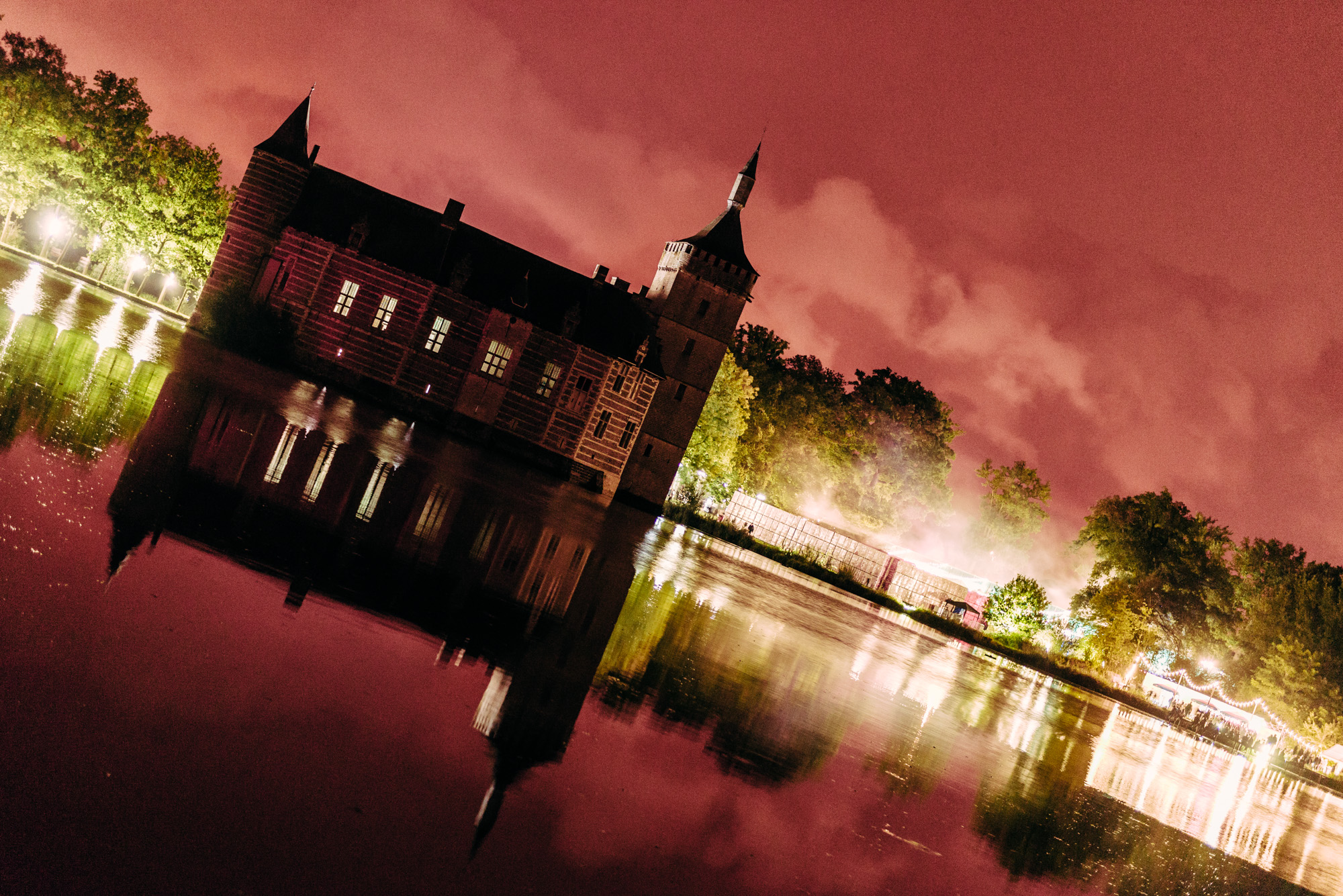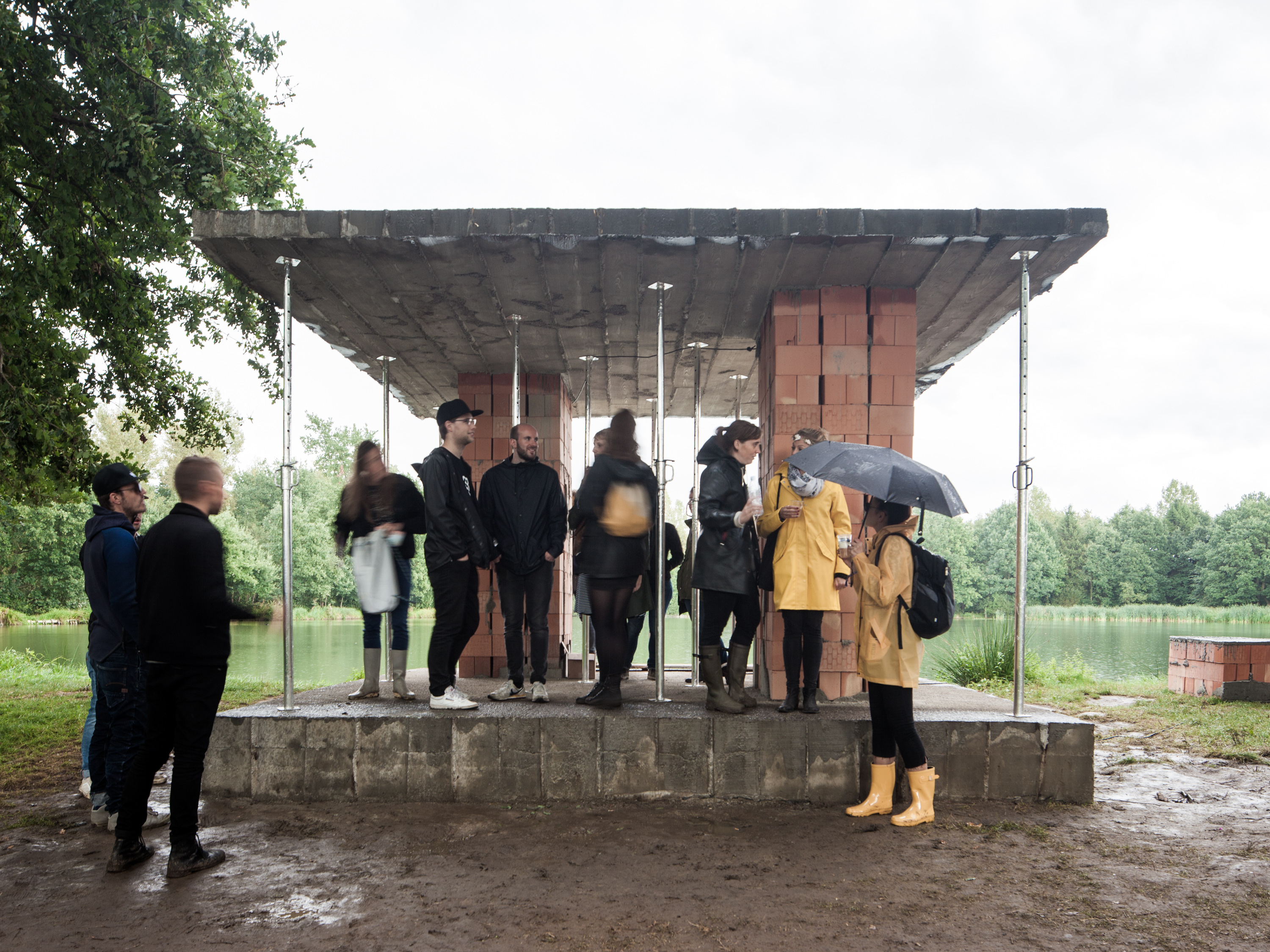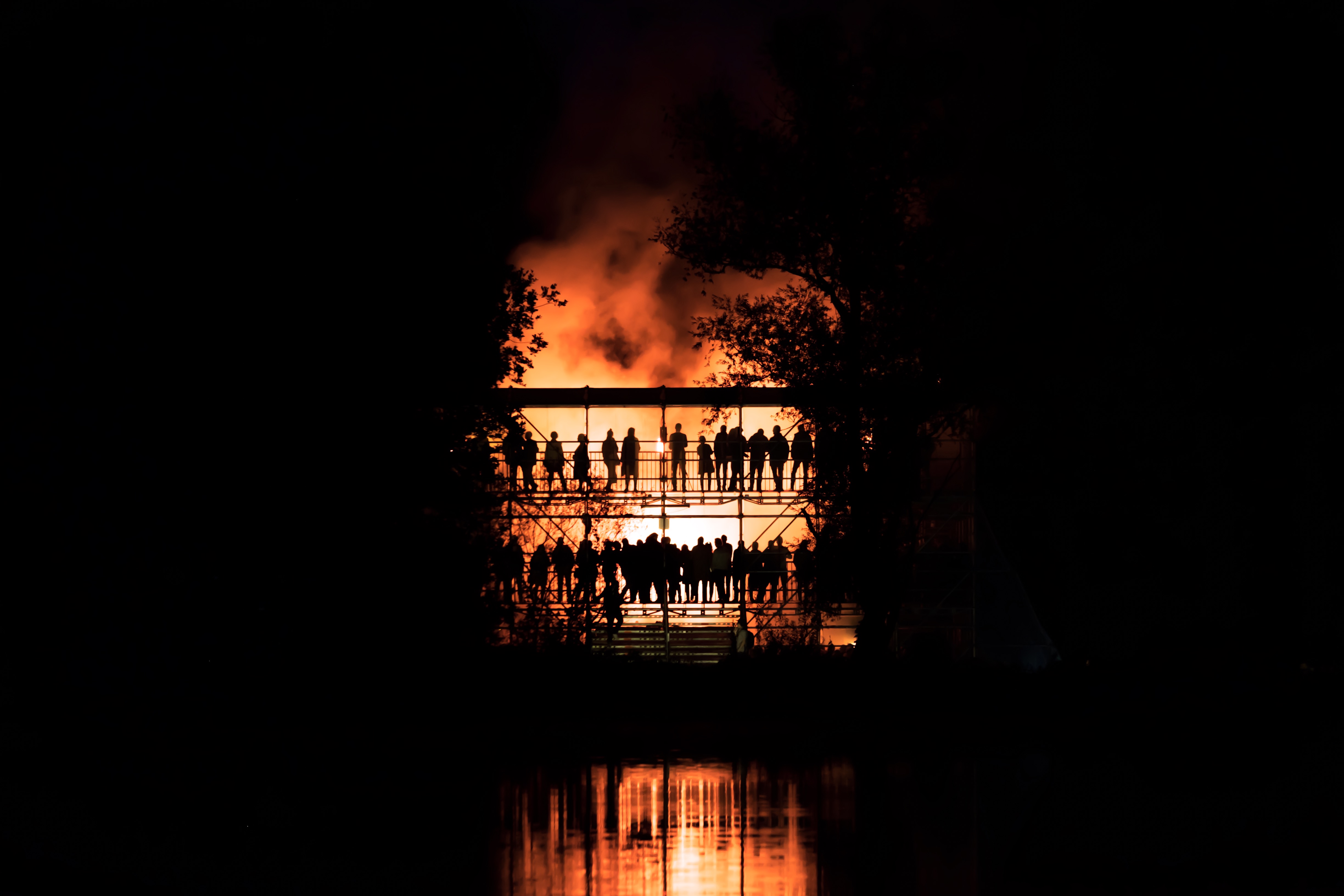Photo Gallery and Review: HORST Festival 2017
The Belgian arts and music event delivers again in the Hageland Hills.

All photos by Maxikamera, Jeroen Verrecht, and Pommelien Koolen.
Horst Arts and Music is a festival of visual arts and alternative electronic music set in the grounds of Horst castle, an hour east of Brussels. 2017 was its fourth edition and the first time the castle courtyard was not used as a stage, due to renovation. The arts curators Gijs Van Vaerenbergh had UK Turner-prize-winning architecture collective Assemble design the NewCastle across the pond, a three-storey scaffold with central courtyard dance pit and panoramic overlooking balconies on all four sides. At the near side of the pond, the Podium Pile Pavilion stage by Belgian Architechten de Vylder Vinck Taillieu also evoked the castle’s courtyard with a rectangular enclosure made of stacked pallets of building bricks.
On Friday—the first of two days—it rained. But special walkways had been laid around the site, ponchos were available, and a marquee had been put up to cover the dancefloor and stage of the Podium Pile Pavilion. By early evening this stage was getting busy. Brussels native Le Motel, with a swoosh on his cap and three stripes down his sleeves, played an MPD controller between two powerful black speaker stacks. He drummed the pads and added percussion to his own trap- and footwork-flavoured tracks. The crowd grew hotter and danced differently according to the rhythm he dropped, now techno, now drum & bass, now hip-hop. Many of the people were in their early twenties, students from the nearby university town of Leuven, dressed in sportswear with kitsch accessories and bumbags slung across their chests.

In the fading silver light at the NewCastle stage, Canada’s Jayda G played soulful house records and threw her large caramel curls from side to side as she sang along and worked the rotary knobs of the mixer, pushing and pulling the frequencies pouring out of the hench black speaker stacks either side of the booth. The youthful dancers in the half-full pit rocked around the muddy floor, exhaling smoke, sipping cans of beer and long drinks, whooping and bending when she slowed one turntable to stop and let runa version of Womack & Womack’s “Teardrops.”
When night fell and the air was dry young people sat at tables under strings of lamps eating freshly made filled buns and fries and pumpkin risotto. People sat pond side at the round wooden jetty with their feet hanging over the water and the warm murmur of talk everywhere and the diffused mix of drums and exotic melodies from the two main stages vibrating the air. On the tree-lined path to the NewCastle stage, Batia Suter’s photograph of a microscopic organism lay illuminated and with water flowing over it from the Wagenhuys lock beside. The complex skeletal structure of NewCastle stood illuminated from the inside, the netting around its outside and the smoke rising from its top catching the pulsing gradients of colours—purple, yellow, blue, pink—and three floors dense with human silhouettes black against the light.
Inside in the smoke and bass the crowd, now muddy and spilling beer, clapped and yelled when San Soda dramatised the extended version of “Young Hearts Run Free” by turning it down as though it was over but bringing it all back in louder. An umbrella with lamps pumped up and down in the jam of hot bodies front and centre. When Hamburg’s Helena Hauff came on, dressed in a floral dark corduroy suit, the mezzanine levels above the main floor were the only places with a little more room to dance. From the first record she placed on the platter to the last, her pale dark-eyed face was cool and the acid attack flooding out from the speakers all the way up the scaffold’s inner corners had the whole metal structure shaking with the force of the dancers and the people watching with their arms over the bars.

Saturday, there were more people on site, in clean sneakers and anoraks, and after some showers, the sky in the late afternoon cleared to blue with chrome clouds. On the other path around the far side of the pond a large fish bounded out of the water a moment, its scales glinted in the soft light, and local DJ Bjeor’s closing tune Round One’s “I’m Your Brother” bounced from the NewCastle stage and its kicks and garage bassline echoed off the castle’s pondside walls where ports released Chaim van Luit’s installation of smoke signals. A little further and left off the path into the woods at Amber Vanluffelen’s small Unroll Your Soil & Give Life stage—where talks with the artists and curators also took place—was a performance by Vogue and Waacking Belgium. People crowded shoulder-to-shoulder and up the three levels of amphitheatre steps on one side. The DJs, a black male and Asian female, banged DJ Rashad’s version of “Walk for Me” as the models, junior to veteran, young to not so young, white to coloured, and thin to curvaceous, strutted down the makeshift runway on heels, struck poses for flashing cameras, provoked each other in battle with snaking arms and extravagant drops to the floor, whilst MC Zelda Fitzgerald in a white boiler suit squatted and rapped on the mic “Eat the runway bitch,” and the audience hollered and clapped.
To a packed Podium Pile Pavilion stage, veteran Gilles Peterson displayed the cover of a rare African LP he played and had the young crowd cheering as he pulled up and ran from the top Mr Oizo’s “Flat Beat.” LA’s old guard Egyptian Lover, in backwards flat cap and with his lady dancing and hyping the crowd beside him, cut and pasted and juggled classic electro records before hugging his TR-808 to his heart and making Prince’s song his own. “I just want your extra time and your pussy lips,” he sang into the mic. “Now dance.” And just out of the hot crowd and shelter a girl twirled in a puddle as the fresh rain came down.
How is it the organisers were so often smiling? Perhaps because Horst is a lovingly curated and carefully planned festival. The inclusion of artworks and architecture alongside the music was done with a light hand, and the talks with the artists and curators were popular. It’s a specialised festival, more focused than the larger ones, so you can experience most of what’s on offer, not just a bit. The crowd is young and friendly and up-for-it, even if it isn’t the wildest festival out there. So if you like an event with popular exciting names from the European electronic music scene, a number of local Belgian acts, and exhibits of contemporary art and architecture, all in a bucolic and historic setting, Horst Arts and Music does what it says in style.
CLICK ON A PHOTO TO ENTER GALLERY BROWSING.

